1871
South Australia's first recorded pre-aeroplane ascent was in 1871 with a flight in a coal gas-filled balloon, piloted by Thomas Gale. The balloon flew from the sheep and cattle markets near the corner of North and West terraces, Adelaide, to a point 12 kilometres north east. Lavinia Balford of Parkside was the first South Australian female to ascend in a balloon when Thomas Gale brought his machine, the Young Australian, to Adelaide in June 1871.
Gale's first flight attempt in Adelaide on Tuesday, June 20, when the balloon only half inflated, left the 20,000 onlookers in the Adelaide parklands "disappointed if not disgusted", according to the Southern Argus – especially the 500 who bought tickets to watch it rise from the grounds of the Exhibition Building, North Terrace. Gale said the reason for the failure was that the coal gas pipe was too narrow. The South Australian Gas Company came to the rescue with a thicker pipe for another attempt on the Saturday at the cattle yards on the western end of North Terrace opposite the Newmarket Hotel. By 2pm, the Register reported, several hundred spectators had paid for admission within the enclosure, and several thousand assembled on North Terrace and nearby parklands. Schrader's band attended, playing "most excellent music".
While they waited for enough wind for the flight, the balloon "gave a lift" to 30 or 40 people to the height of the 60-metre tether rope. Lavinia Balford was among them. Gale's first full flight took place at 4.15pm. His companion on the flight was theatre owner and impresario Samuel Lazar. Lazar attempted to entice his dog into the basket but it refused. Lazar threw out several copies of the Register to mark the route of his flight that ended near Thorndon Park Reservoir.
Over the next few weeks, Thomas Gale took many more passengers up in Young Australian. He opened the way for many similar events in Adelaide's parklands. Within 10 years, there were many balloonists, with athletes making parachute jumps from the baskets, high wire acts and other daring feats.
Gale never left Adelaide. He married Lavinia Balford and lived in Parkside for the rest of his life.
1910
Businessman Fred Jones shipped a Bleriot XI (No.37) monoplane in kit form to Adelaide in 1910, after buying it during a trip to Europe as part of his importing and exporting enterprise.
The all-wood Bleriot, with a fully braced-wing, was the first aircraft to use primary flight controls still familiar today. After landing on the Port Adelaide docks from the steamer Schwaben, the disassembled Bleriot XI was taken by horse and cart to John Martin's stables in Kent Town. It was moved to Eyes & Crowle in Pirie Street, where Carl Wilhelm "Bill" Wittber was employed.
Wittber, born in the small town of Salisbury in 1879, had left school at 14 but continued his education at the School of Mines and Industries (later to become the University of South Australia) and was later apprenticed to Ellis & Clark, electrical engineers. Jones employed Wittber to supervise the aircraft's assembly and rigging, run the engine and oversee flight tests.
Before the flight tests, the plane was disassembled, transported to John Martin's store in Rundle Street, reassembled and displayed to thousands.
Meanwhile, Jones was scouring Adelaide for a site to fly the Bleriot. In March 1910, a paddock in Bolivar on the corner of Whites and Shepherdson roads was selected and its owner, Albert Winzor, agreed. The Bleriot was moved from John Martin's, after being crated to Bolivar, where it was reassembled.
A third person became involved in the test flight. Young Fred Custance had offered his services as pilot for free. Jones accepted.
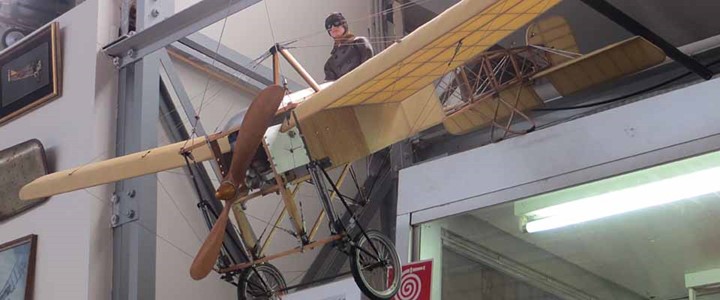
Model of a Bleriot
Engineer Bill Wittber was at the controls when the first flight, nicknamed the "Wittber hop", happened in the Bleriot XI monoplane. Wittber was conducting taxiing tests in a Bolivar paddock when he suddenly found himself about five feet in the air. He flew 40 yards before landing. This claim to Australia's first flight is disputed as a 'controlled flight'. Harry Houdini's first controlled powered flight occurred a few days later in Victoria.
On March 17 at Bolivar, volunteer pilot Fred Custance was at the controls for another flight attempt, as Jones, farmer Albert Winzor and two neighbours watched. The Register's (unverified) report was that: "After covering about 18 yards, the machine rose 12 feet in the air, and at this height made a circuit of the paddock thrice, a total distance of about three miles, in five minutes and 25 seconds.
Jones's own version was that Custance did taxi around the paddock about three times before a first "very wobbly" straightforward flight of about one minute, ending with a "very rough landing". Against Jones's wishes, Custance made another attempt to create an Australian record – and crashed the plane.
The damaged aircraft was returned to Adelaide and delivered to Duncan & Fraser for repairs. In May 1910, a fire destroyed the plane but the engine was recovered. Wittber persevered. From 1911, he designed and built his own plane, even adding his own six-cylinder radial engine – another Australian first. The engine is on display at SAAM.
1911
Douglas Mawson arranged to import a Vickers-built REP monoplane when he was in England in 1911 organising and recruiting personnel for his next Antarctic expedition. The Vickers No.1 monoplane had first flown in March 1911 and No.2 was sold to Mawson. Mawson saw possibilities for the aircraft speeding exploration and, if used as a sledge, reducing physical hardships.
P&O shipped the plane on the steamship Macedonia to Adelaide in October 1911 with its pilot H.E. Watkins and also fellow expeditioners Bickerton and Wild. The Vickers REP monoplane's first task was exhibition flights in Australia to draw attention (and sponsorship) to the expedition. During a test flight on October 4 at Adelaide's Cheltenham racecourse, excessive pressure in the fuel tank caused it to rupture, almost blinding Watkins. On its second flight early next morning, wind caught the 34-feet-long aircraft at the south west corner of the racecourse, causing its left side to touch the ground and overturn. Watkins and his passenger Wild were caught underneath but survived.
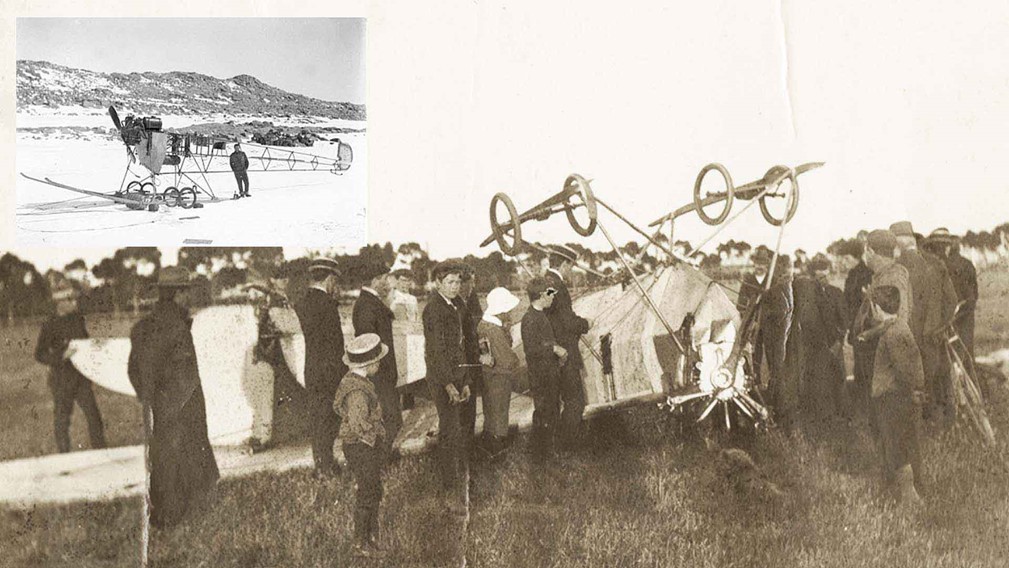
A group of onlookers with the crashed Vickers REP monoplane at Cheltenham racecourse.
Inset: The ruined planed converted into an air tractor to serve Douglas Mawson's Antarctic expedition.
The monoplane was damaged beyond repair for flying but it was sent south with the expedition, stripped of its wings and metal sheathing from the fuselage. Engineer Bickerton spent most of the 1912 winter converting it to a sledge, fashioning brakes from geological drills and steering from the plane's landing gear. It was first tested in November 1912, and helped with laying depots for the expedition's summer sledging parties but its use otherwise was minimal. Towing four sledges, the air tractor went with Bickerton's party to explore the west of the Cape Denison base. Freezing conditions jammed othe engine's pistons after just 10 miles and it was left behind and later dragged back to Cape Denison. Its frame was left on the ice when the expedition returned home in 1913. In 2010, an Australian carpenter stumbled on the remains of the aircraft, its cast-iron framework revealed by an unusually low tide and reduced ice cover.
1914
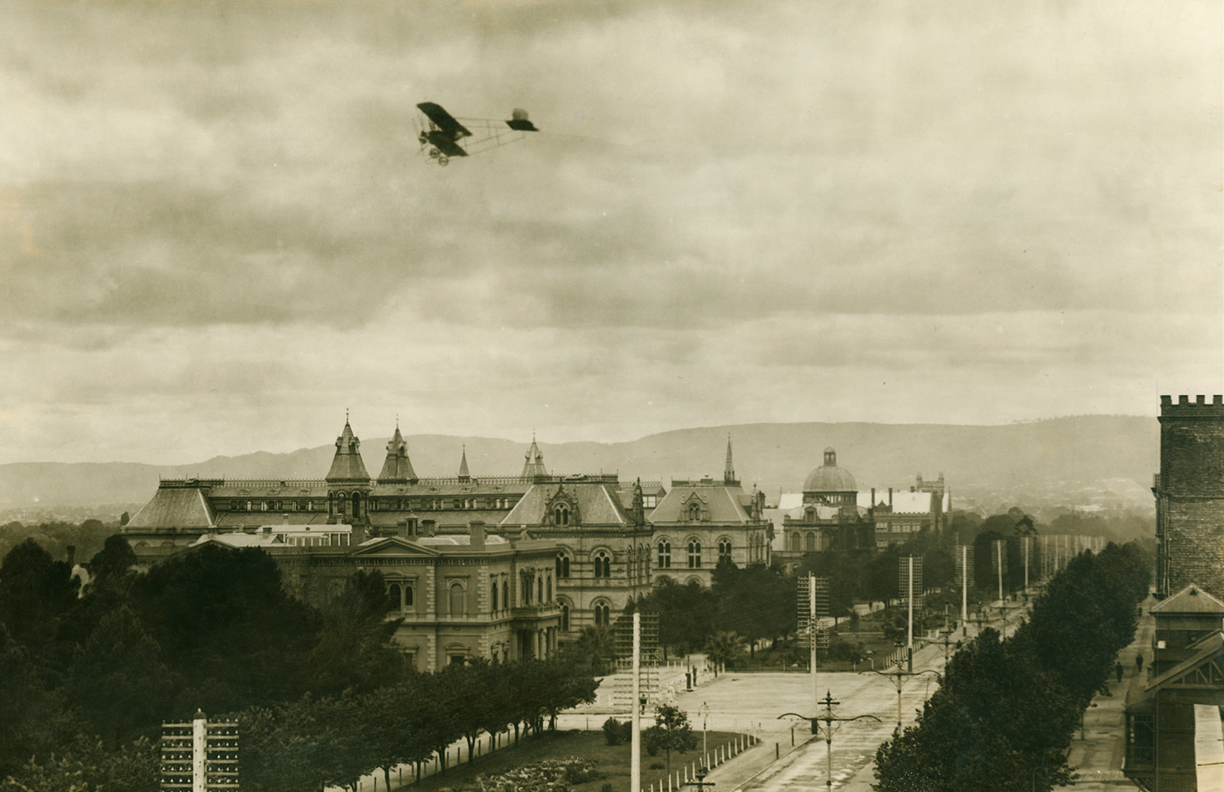
First successful aeroplane flight over Adelaide (A.W. Jones, pilot) Jan. 2, 1914.
Aircraft is a Caudron G.II.
Jones set up camp at Cheltenham for several weeks around late 1913, early 1914; and is credited with the first ever flight over Adelaide's CBD. There are several newspaper reports from the era to support this, and his flight over the CBD and other flights are extensively covered.The 'Register' has "Two Flights Over Cheltenham" on 29/12/1913. The first flight over the CBD is said to be 02/01/1914 and was widely reported in local papers.
1915
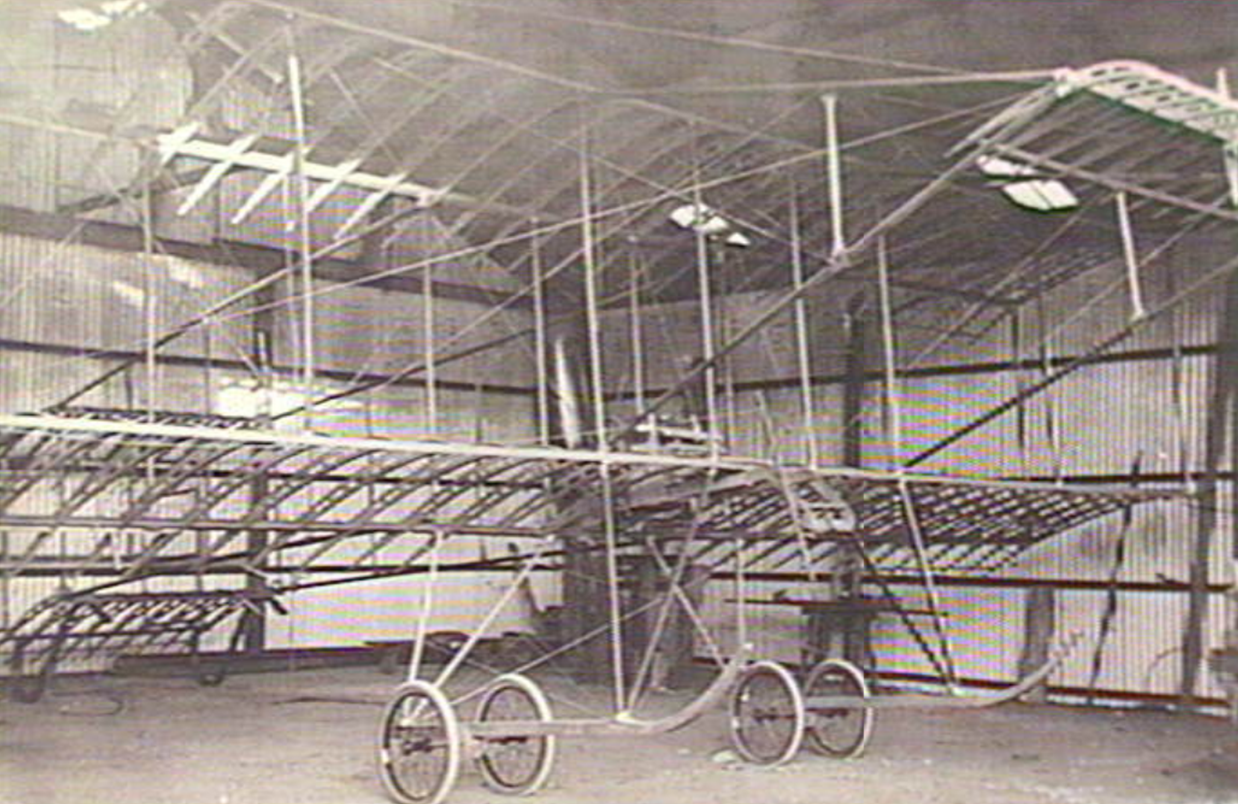
Farman style bi-plane built by Carl Wilhelm (Bill) Wittber and tested by South Australian aviator Harry Butler at Smithfield, SA. It was the first aeroplane built and flown in South Australia. The authorities stopped all trials and the last flight made at Smithfield was early 1916. Wittber then lost all interest in aviation and burnt the fabric in his bathheater at Dulwich where he lived. Butler left for England, gained his flying certificate and became an instructor in the R.F.C.
1917
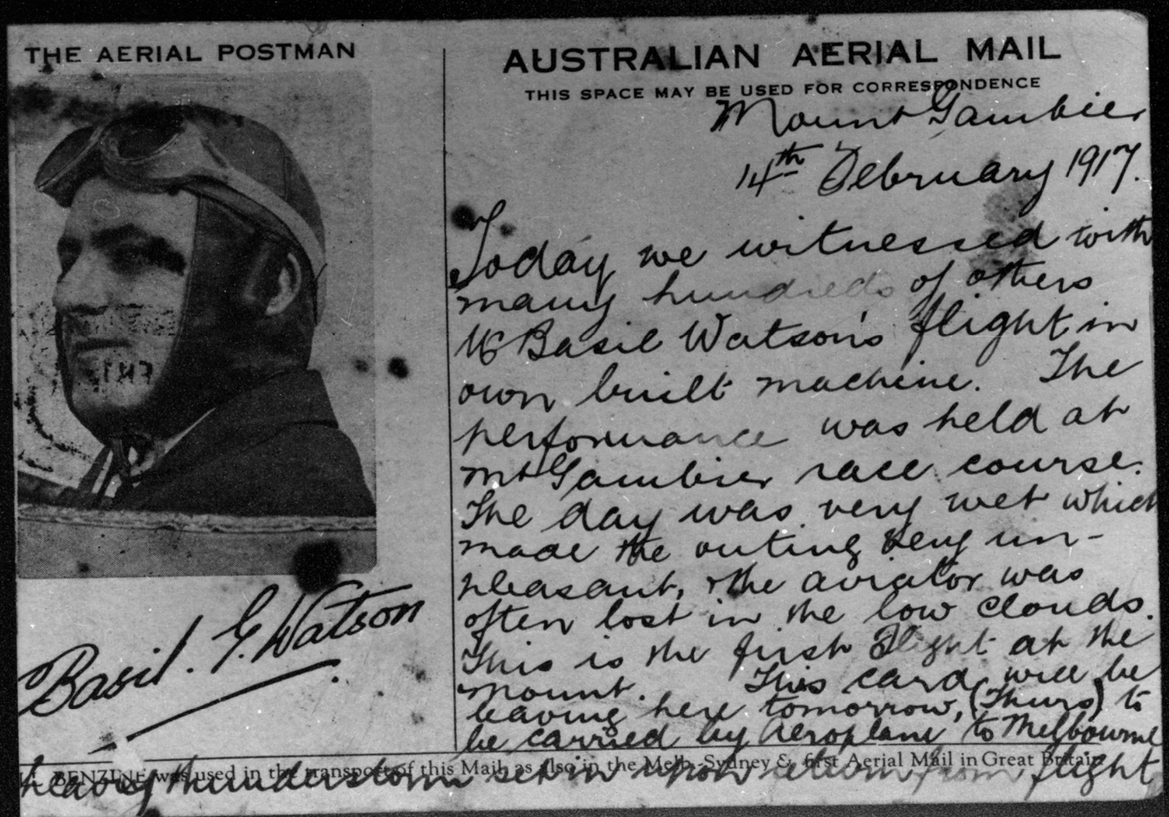
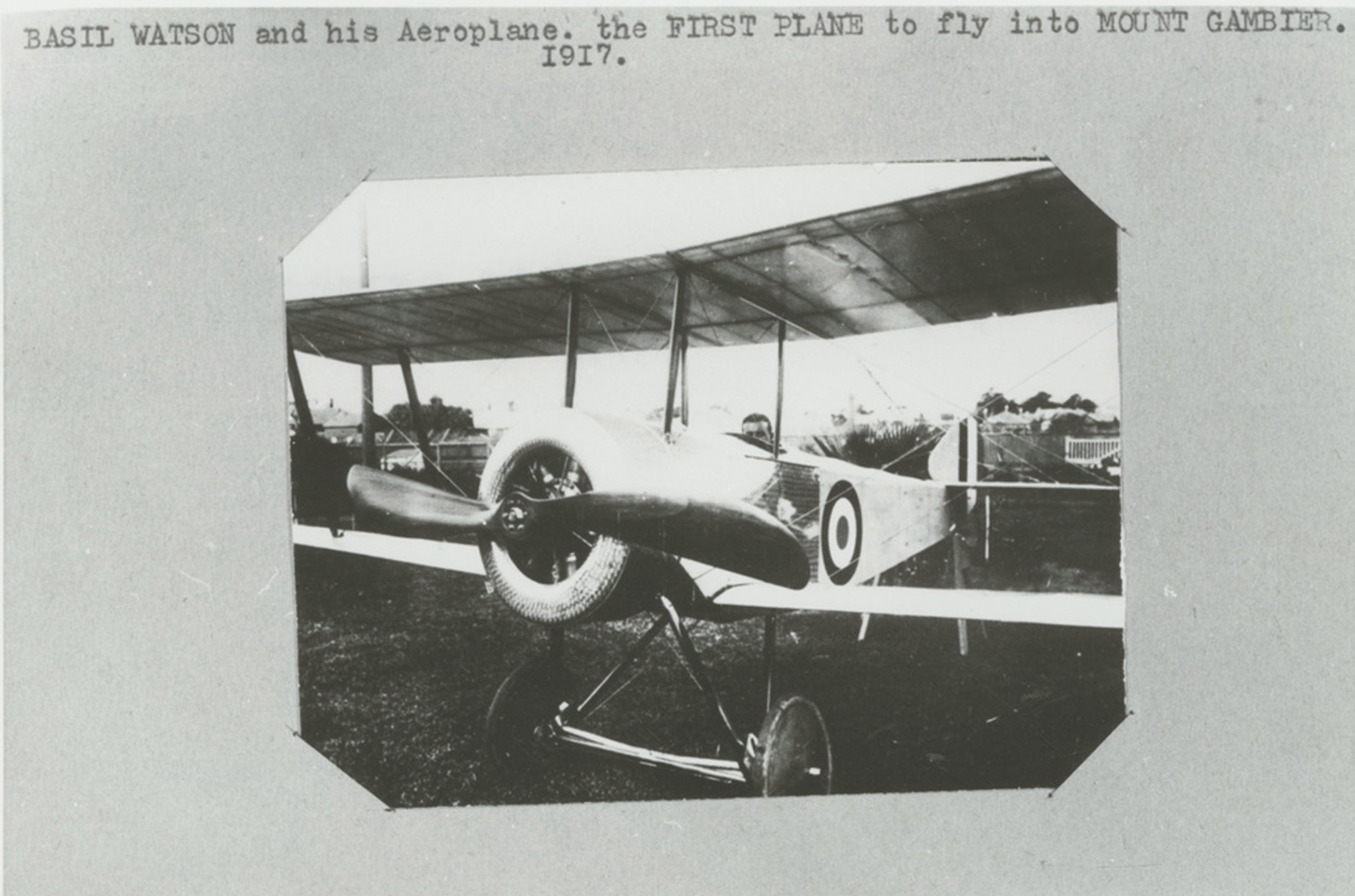
Basil Watson - first man to fly to Mt. Gambler.
Photograph of post card depicting Basil G. Watson with words stating "Mount Gambier 14th February 1917. Today we witnessed with many hundreds of others MG Basil Watson's flight in own built machine. The performance was held at Mount Gambier race course. The day was very wet which made the outing very unpleasant. The aviator was often lost in the low clouds. This is the first flight at the Mount. This card will be leaving here tomorrow (Thurs) to be carried by aeroplane to Melbourne. Heavy thunderstorm set in upon return from flight.
1917
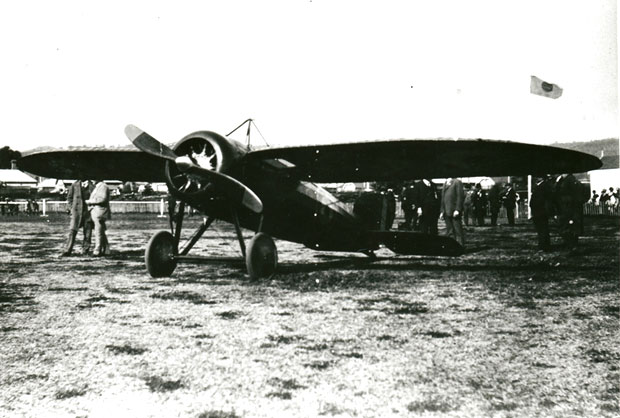
Harry Butler's aeroplane at Unley Oval.
The first commercial flight in Australia was on 6 August 1919, when Harry Butler carried the mail by air from Adelaide to his home town of Minlaton on the Yorke Peninsula. It was also the first commercial flight over sea in the Southern Hemisphere. The aircraft was a Bristol M.1C monoplane known as "the Red Devil". This aircraft is on display at Minlaton (York Peninsula) and is believed to be the only aeroplane of its type remaining in the world.
1919
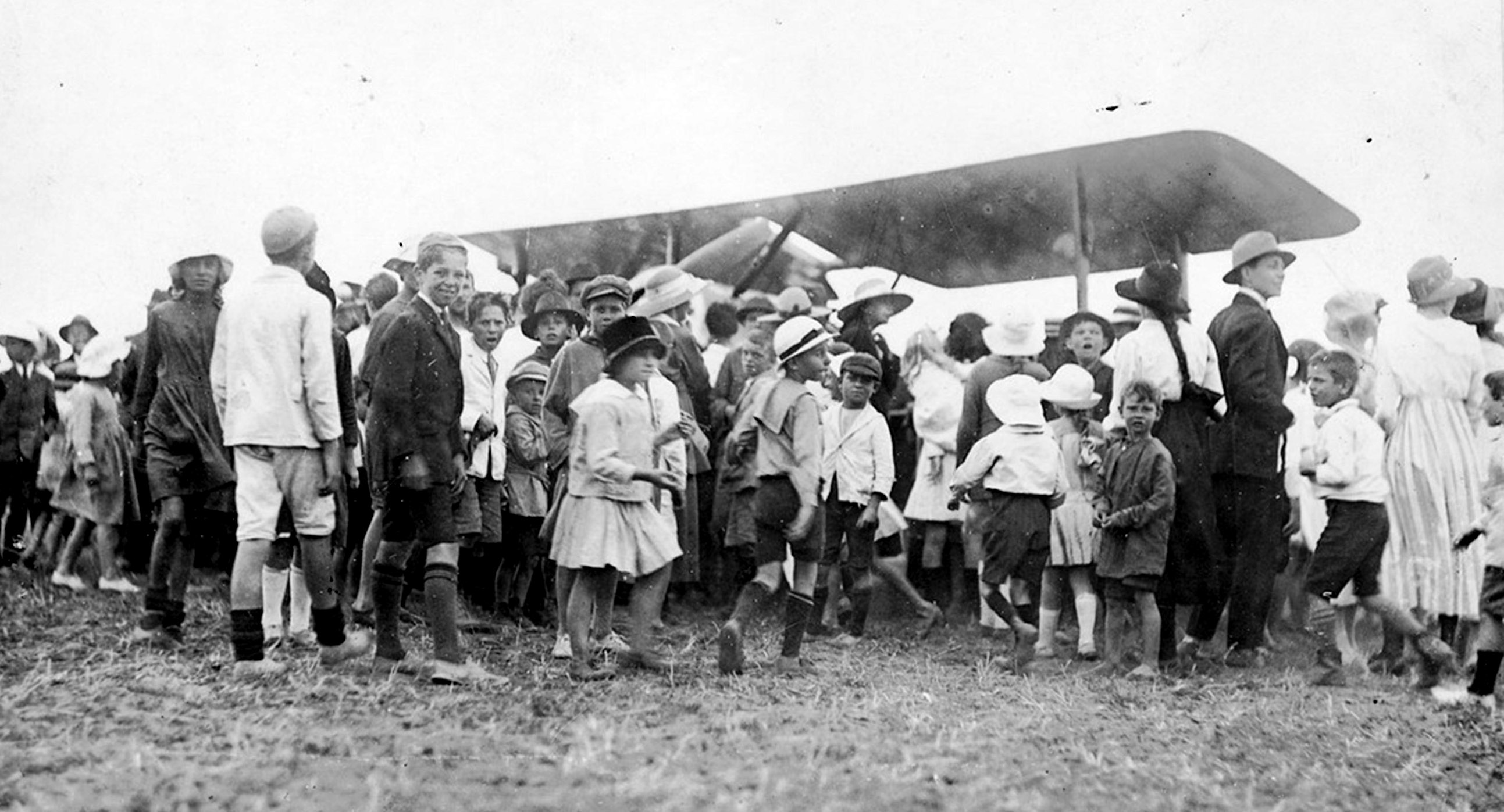
A group of children looking at a Sopwith Dove aeroplane, owned by Aerial Transport Company of South Australia Ltd.
1919
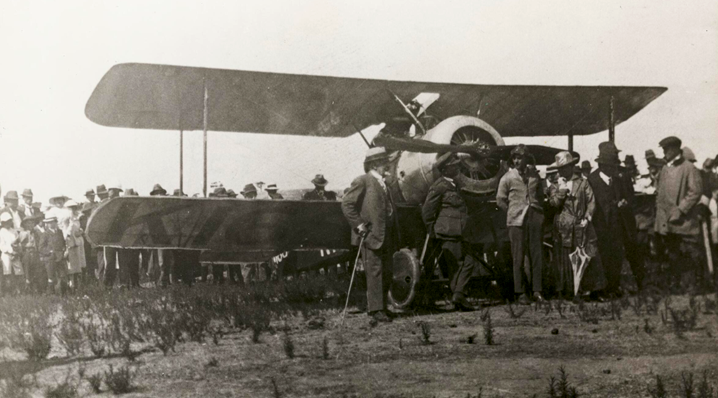
Darcy Rees (in uniform) and pilot Donald Loftus (wearing goggles) interview local dignitaries before inaugural joy flight in a Sopwith Dove biplane, Glenelg, South Australia, 1919
1919
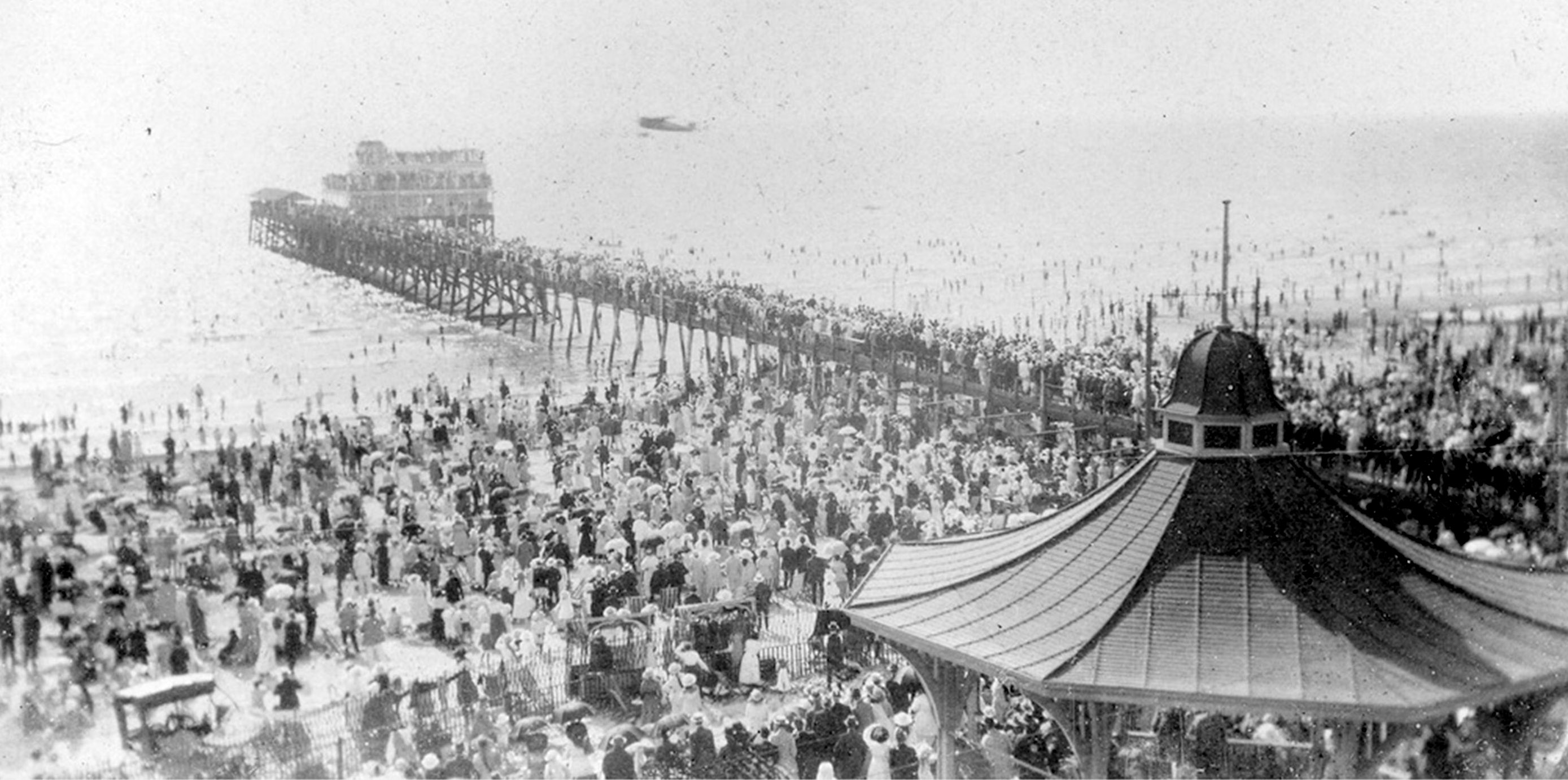
A large crowd of holiday-makers watching Captain Harry Butler 'jetty jumping' at Henley Beach in his 'Red Devil', a Bristol M.1c monoplane.
1919
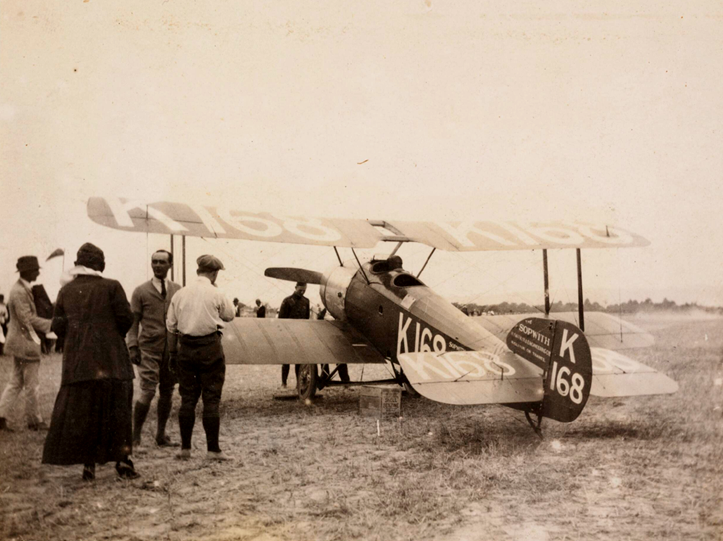
Three men and a woman wait next to Sopwith Dove biplane K168 on a field while it is prepared for a joy flight, Glenelg, South Australia.
1919
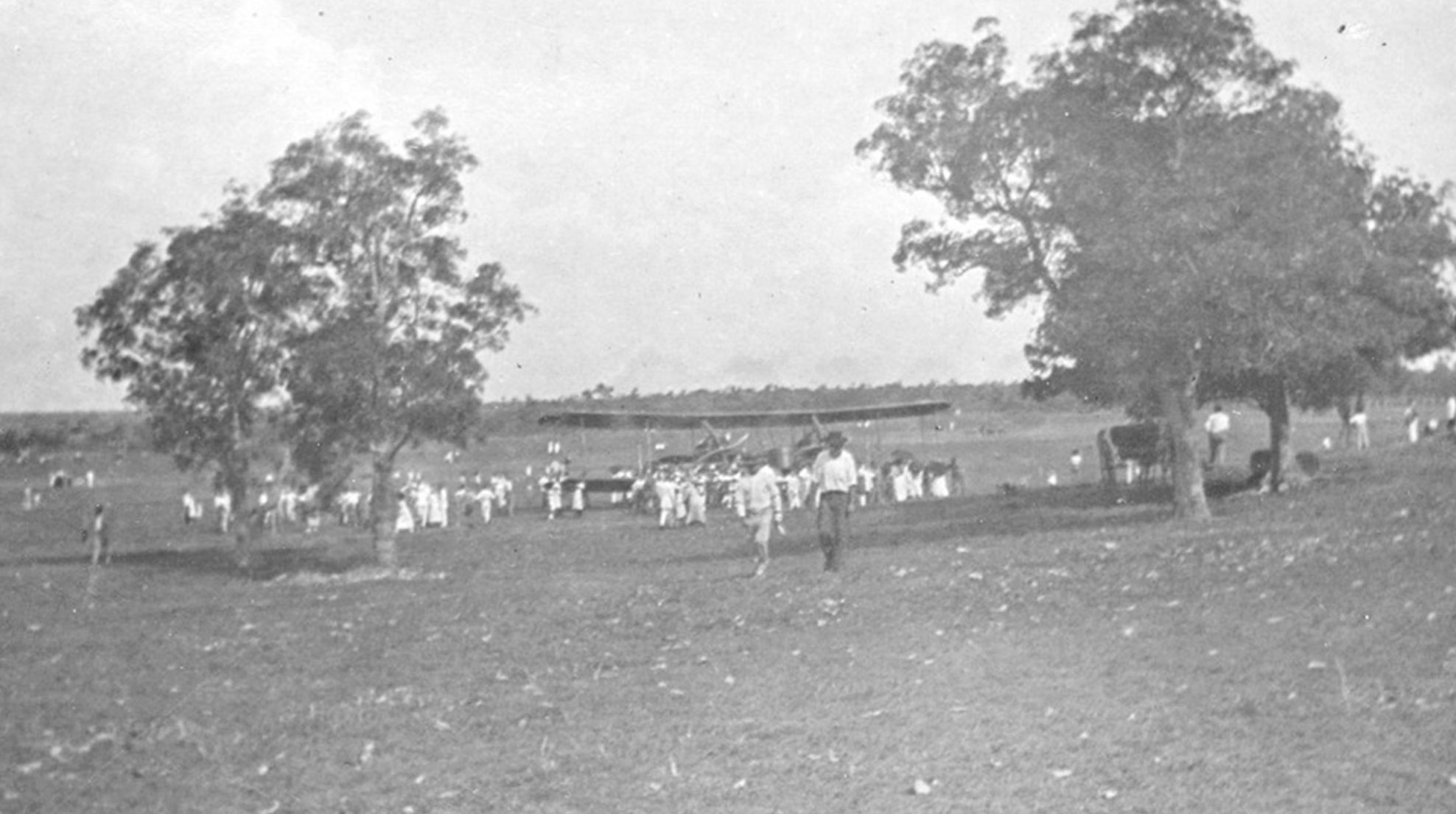
Sightseers viewing an aeroplane which has landed in a country paddock near large eucalyptus trees in South Australia, exact location not known. Possibly Smiths Vickers Vimy.
1919
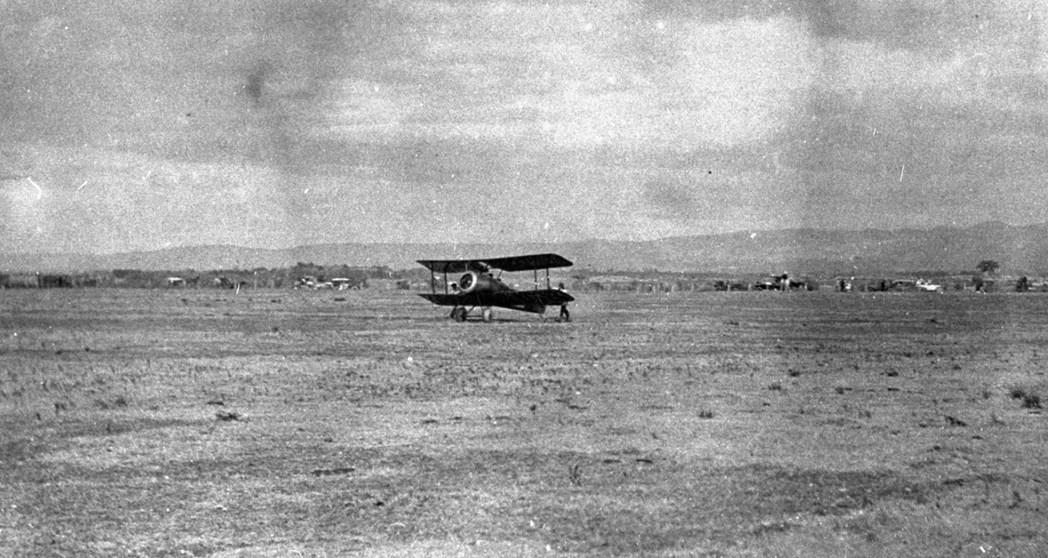
A Sopwith Dove aircraft operated at Glenelg late 1919 to early 1920 by Aerial Transport Co. of South Australia Ltd.
1919
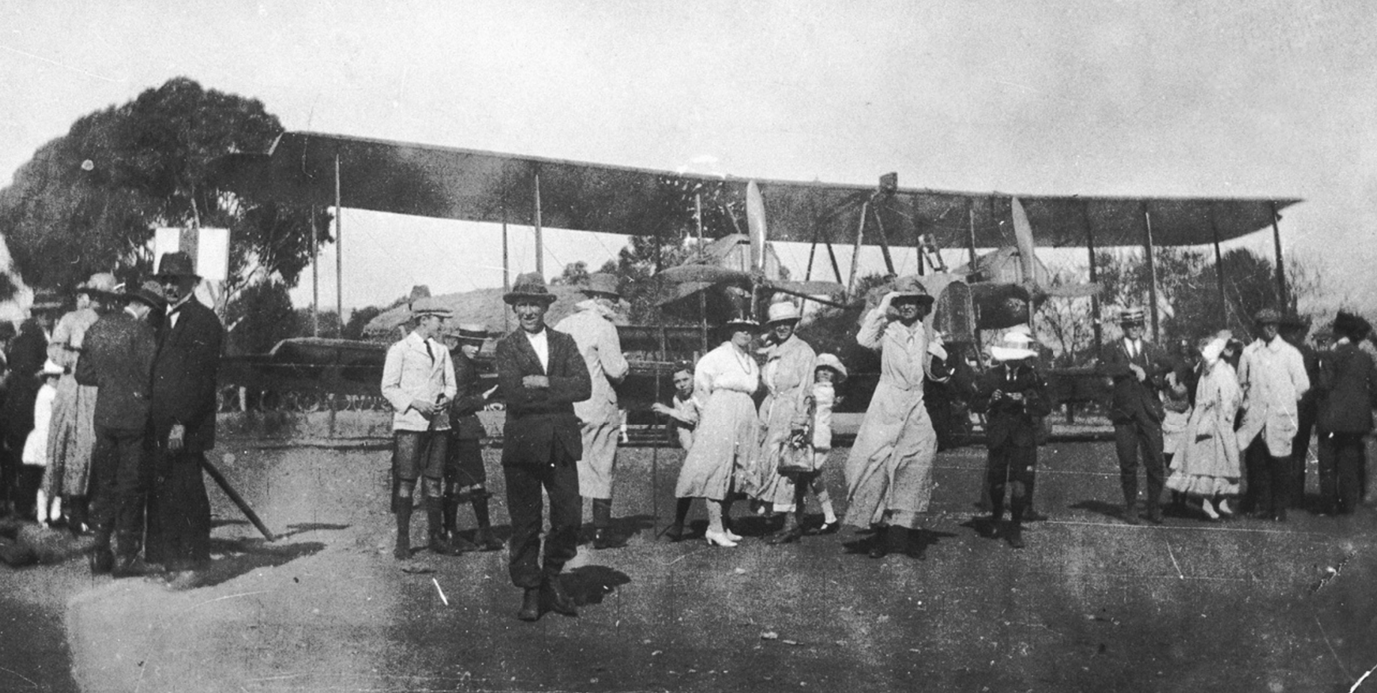
Ross and Keith Smith's aircraft after their flight from England in 1919.

The end of the great flight - the crowd at the arrival of the Vickers Vimy and crew in Northfield, Adelaide. Mounted police are supervising the crowd and there are spectators standing on top of a building on the right, with signage for 'The Harry J. Butler & Kauper Aviation Co. Ltd.
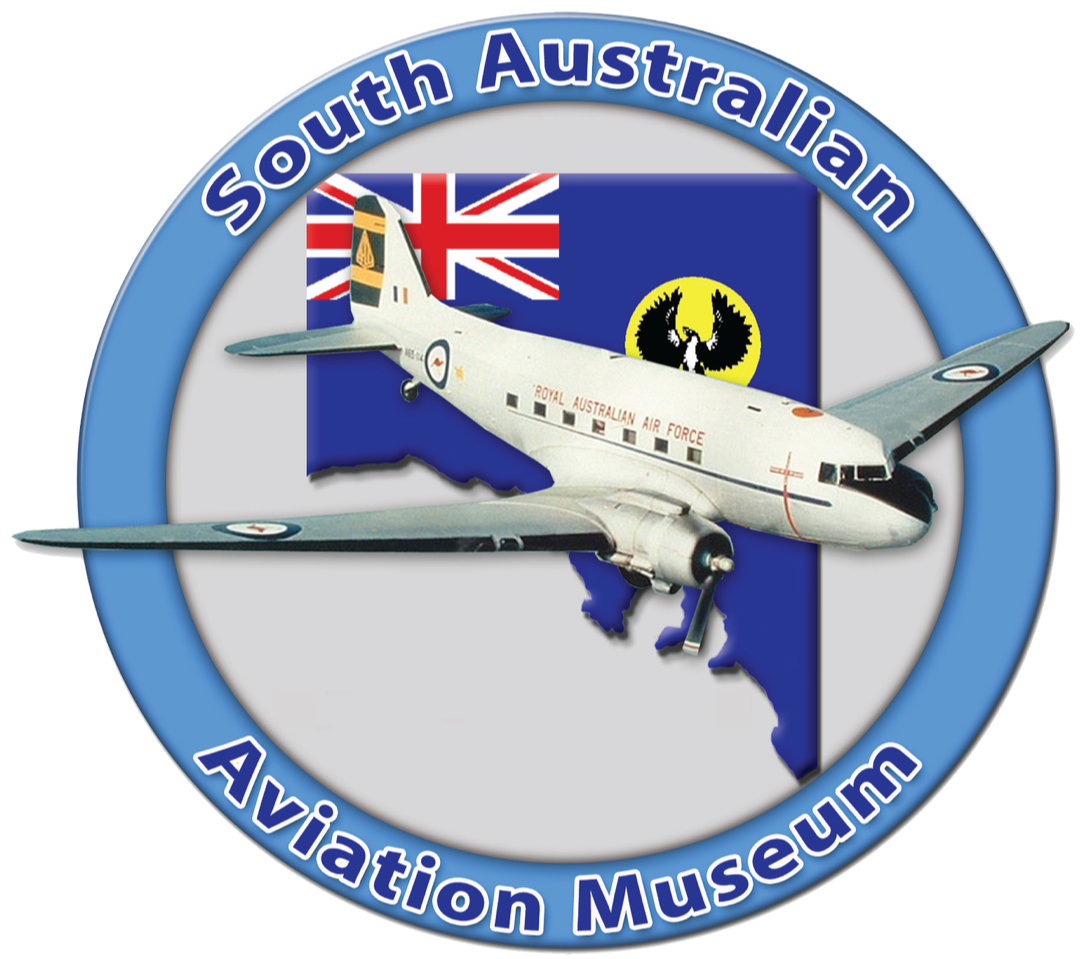

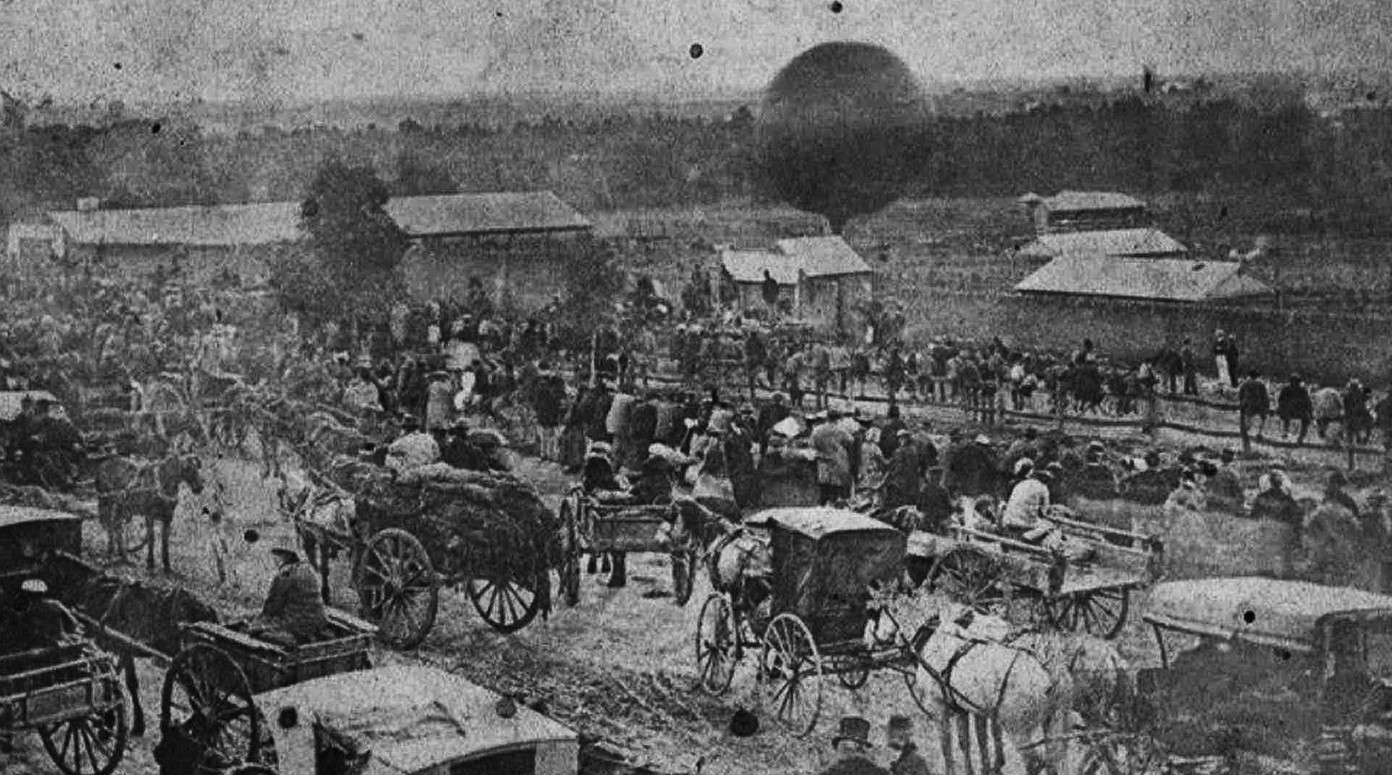











 Sightseers viewing an aeroplane which has landed in a country paddock near large eucalyptus trees in South Australia, exact location not known. Possibly Smiths Vickers Vimy.
Sightseers viewing an aeroplane which has landed in a country paddock near large eucalyptus trees in South Australia, exact location not known. Possibly Smiths Vickers Vimy.

